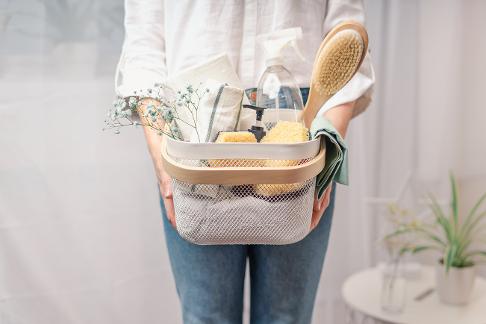




Together, we?ll navigate every step of the process to deliver a successful sale and maximize your return.

Real Est at e Advisor / CPA
Yvonne@YvonneBlewett com
503 5776262
310 N State Street, Suite 102
Lake Oswego, OR 97034
YvonneBlewett com
As a seasoned Real Estate Adv sor and CPA,Yvonne Blewett's knowledge of Port and Metro real estate is among the most ref ned in the market Her business has been built over the years by referrals A testament to the oyalty and trust that she establishes w th her cl ents by managing expectations along the journey with close attention,transparency,and efficiency Yvonne's passion is to provide "uncompromised personalized serv ce" that will shine through from the moment you first engage in a conversation w th her
Along with real estate,Yvonne ut zes her financial sk set to help better negotiate contracts and gu de them through the buying or selling a home She considers it a pr v ege to assist her clients in making one the most substantial financ al investments of their lives.Yvonne hopes to earn your business and do the same for you!
Yvonne delivers results by leveraging the powerfu Cascade Hasson Sotheby's International Realty brand and market data.Through mutua trust and respect,she has built productive network connections with other agents These are the reasons Yvonne ranks as one of Cascade Hasson Sotheby s top-produc ng agents Yvonne works every day with buyers and sellers in all pr ce ranges to deliver results above their expectations.
As a nat ve Oregonian who marvels every day at the excitement of the city,she has a seasoned knowledge of the diverse ne ghborhoods and an apprec ation of what makes each of them unique Rea estate s Yvonne's passion,and she considers it a privilege to assist her c ents make one of the most significant financia nvestments of the r ives


The homes we represent are special Each one, the gateway to an extraordinary way of living. As unique as every individual
With a keen eye for uncommon beauty and value, our advisors are uniquely placed to see what?s exceptional
Tailoring what we do to every home. With world- class service, and a unique heritage of storytelling Because every home is one of a kind.
Just like you Just like us CascadeHasson.com
The Basics
Questions to Ask When Choosing a REALTOR®
Vocabulary: Agency & Agency Relationships
Worksheet: Ca culate Cap tal Gains
The Property
What to Do Before Listing Your Home
How to Hire a Remodeling Contractor
How to Prepare for the Photoshoot
How to Attract More Buyers
Checklist for a Better Home Showing
What To Know About The Appra sal Process
The Transaction
How to Improve the Odds of an Offer
How to Recogn ze a Qualif ed Buyer
Worksheet: Track Closing Costs
Vocabulary: Transaction Documents
The Move
Checkl st: How To Prepare For The Move
How to Pack Like a Pro
How to Move With Pets
Checkl st for the New Owners




- Experience and expert se
- Designations and certifications
- Localmarket knowledge
- Tai ored marketingstrategies
- Cuttingedge tech & tools
- Global reach
- Attentive to how you prefer
- to communicate
How long have you been in residentail real estate sales? Is it your full-time job?
Like most professions, exper ence s no guarantee of ski l. But much of real estate is learned on
How many homes did you and your real estate brokerage sell last year?
This will touch on how much experience they have, and how up-to-date they are on the local
How many days does it take you to sell a home? How does that compare to others?
The REALTOR®you nterview should have information about the r performance on hand and be able to present market statistics from their local MLS to provide a comparison
What?s the average variation between your initial listing and final sales price?
This s one indication of a REALTOR®?s pricing and negotiating skills
What specific marketing systems and approaches will you use to sell my home?
Your agent should have an innovative plan and understandhow to market property on ine
Will you represent me exclusively, or might you also choose to represent the buyer?
While it?s usually legal to represent both part es in a transaction, your REALTOR®shou d be able to explain his or her phi osophy on client obligations and agency relationships
Can you recommend service providers to help me obtain a mortgage, make home repairs, and so on?
Practitioners should be able to recommend more than one provider and let you know if they have any special relationship with any of the prov ders
How will you keep me informed about the progress of my transaction?
A real estate agent who pays attention to the way you prefer to communicate and responds accordingly w ll make for the smoothest transaction.
In Oregon and Southwest Washington, the term ?agency? def nes the legal responsibilities your real estate professional owes to you and other part es involved in a transaction Here?s a breakdown of the different types of agency relationships you may encounter when buying or selling property in these areas
Seller?s Agent (Listing Agent)
A Seller?s Agent is hired by and represents the seller. This relationship is typically estab ished through a listing agreement The seller?s agent owes fiduciary duties to the seller, including oyalty, confidential ty, and full disc osure Their primary respons bi ity is to secure the best possible price and terms for the seller
In Oregon and SW Washington, fiduciary dut es nclude loyalty, obedience, disclosure, confidential ty, reasonable care, and accounting The seller?s agent must always act in the seller?s best interest.
Buyer?s Agent
A Buyer?s Agent is hired by a prospective buyer to represent their best interests throughout the transaction This relationship is often formalized w th a Buyer Agency Agreement The buyer?s agent owes fiduciary duties to the buyer, such as negotiating the best price and terms, providing advice, and keeping the buyer?s information confidential.
In Oregon, the buyer?s agent typically rece ves their comm ssion through a split with the seller?s agent as part of the transaction. However, buyers can also negotiate a separate payment structure w th their agent if preferred
In Oregon and SW Washington, Disc osed Limited Agency allows a real estate licensee to represent both the buyer and the seller in the same transaction, but only because the agent is representing both s des, fiduc ary duties are l mited to avo d conflicts of interest The agent must remain neutral and cannot advocate for one party over the other They are required to disclose all mater al facts about the transaction but must ma ntain the conf dent ality of both clients? personal information

Subagency
Subagency is less common in Oregon and SW Wash ngton, but it can occur when a real estate icensee from a different brokerage shows a property to a buyer without forming a buyer agency relationsh p
A subagent owes fiduciary duties to the sel er and works on beha f of the isting agent While subagents must treat buyers honestly, their primary loyalty is to the seller
Designated Agency
In some transactions, a Designated Agency relat onship s created within a brokerage
The managing pr ncipal broker assigns a specific agent to represent the buyer and another agent to represent the sel er, ensuring each client rece ves fu l representation without the conf icts that can arise from dual agency
This al ows each agent to prov de uncomprom sed oyalty, confidential ty, and advocacy for their respective clients, even within the same brokerage.
Transaction Facilitator (Nonagency)
Oregon does not permit Transaction Brokerage (nonagency) relat onships. All rea estate professionals in Oregon must act as agents and owe fiduciary duties to their clients
Even when a l censee ass sts both parties in a transaction, they must clearly disclose their role and prov de agency disclosures to a l parties involved
Your home?s original sa es price when you bought it (not what you brought to closing)
Additiona costs you paid toward the original purchase (include transfer fees, attorney fees, and inspections but not points you paid on your mortgage.
Cost of mprovements you?ve made (inc ude room additions, deck, etc Improvements do not include repairing or replacing existing items)
Current sel ing costs (inc ude inspect ons, attorney fees, real estate commission, and money you spent to fix up your home to prepare it for sale)
Add the above items to get your adjusted cost bas s
The final sale amount for your home
The adjusted cost bas s figure from above
Your capital gain
Capital Gains Exemption on Home Sales
When se ling your primary residence, up to $250,000 of capita gains (or $500,000 for married coup es f ling jointly) can be excluded from federal income tax if you meet the following criteria:
1 You have owned and lived in the home as your primary res dence for at least two of the last five years before the sa e.
2 You have not cla med the exclusion on another home sa e in the two years preceding th s sale
You may still qua ify for a partial exc us on if you don? t meet the ful two-year requirement due to unforeseen c rcumstances such as a job relocat on, divorce, or medical emergency The partial exc usion is based on the length of time you lived in the home before the sale
Key Clarif cations:
1 The exemption is only for primary res dences? not for investment properties or second homes
2. The two years of ownership and use don? t have to be consecutive, but they must add up to two years w th n the five-year period before the sale
3.?Unforeseen circumstances? are defined by the IRS and can include s tuations like job


When listing your home, consider that your buyer might make their decision to purchase before they even get out of the car. Clean, organize, and unclutter your home both inside and out


Consider a pre-sa e home inspection
An inspector wil be able to give you a good indication of the trouble areas that will stand out to potential buyers, and you?ll be ab e to make repairs before open houses begin
Organize and clean

Pare down clutter and pack up your least-used items, such as arge blenders and other kitchen too s, out- of-season clothes, toys, and seasona items Store items off-site or in boxes neatly arranged in the garage or basement. Clean the w ndows, carpets, walls, lighting f xtures, and baseboards to make the house sh ne
Get replacement estimates
Do you have big-t cket tems that wi l need to be replaced soon? Find out how much it will cost to repair an older roof or rep ace worn carpeting, even if you don? t plan to do so The figures w ll help buyers determine f they can afford the home, and they?ll be handy when negotiations begin
Locate warranties
Gather up the warranties, guarantees, and user manua s for the furnace, washer/ dryer, d shwasher, and any other items that w ll remain with the house. It may seem l ke this task can be left until c os ng, but you don? t want lost paperwork or last-minute scrambl ng to cause the deal to fall through
Spruce up the curb appeal
Walk out to the front of your home, close your eyes, and pretend you?re a prospective buyer seeing the property for the f rst time As you approach the front door, what is your impression of the property? Do the lawn and bushes look neat y man cured? Is the address clear y v sible? What do you see framing the entrance, f anything? Is the walkway free of cracks and
Shop around for the right company
- Get at east three written estimates
- Ask for and check references If possible, ook at jobs the contractor recently completed
- Check w th your local chamber of commerce or Better Business Bureau for comp aints
- Be sure that the contractor has the necessary l censes and insurance
- Also that the contractor has the abil ty to obtain permits.
- Ask if the contractor?s workers wi l do the entire ob or whether subcontractors wi l be

Read the contract carefully
- Be sure the contract states exactly what s to be done and how change orders will be handled.
- Check that the contract states when the work wil be completed and what recourse if it sn? t
- Make sure the contract indemnifies you f work does not meet bui ding codes or regulat ons
Seal the deal
- Remember that you can often cancel a contract with n three business days of signing t
- Make a small down payment so you won? t lose much f the contractor fails to complete the job.
- Don? t make the final payment unt l you?re satisfied with the work
- Trim bushes and branches so they don? t block windows or architectura details.
- Set a pot of bright flowers (or a smal evergreen in winter) on your porch or
- front walkway
- Instal new, matching locks and knobs on your front door
- Repair any cracks or holes in the driveway, and c ean oil spots with degreaser
- and a stee brush
- Edge the grass around walkways and trees
- Stow your garden tools and hoses out of sight, and clear kids? toys from the lawn
- Buy a new mailbox.
- Upgrade your outdoor lighting.
- Purchase a new doormat for outs de your front door
- Clean your windows, inside and out
- Polish or replace your house numbers
- Mow your lawn. A so, turning on the sprink ers for 30 m nutes before the showing
- wi l make the whole yard sparkle
- Place a seasonal wreath on your door

With the majority of buyers shopping for homes online, high-resolution slide shows and video tours are a must. Here?s how to make your home shine on camera
Understand the camera?s perspective
The camera?s eye is different from the human eye It magn fies clutter and poor furniture arrangement so that even a home that feels comfortable in person can ook jumbled on ine
Make it spotless
Cameras also tend to magnify grime Don? t forget floor cover ngs and walls; a spot on a rug might be overlooked dur ng a
Know what to leave
You want to avoid clutter, but try to have three tems of vary ng he ghts on each surface On an end table you can place a tall amp (high), a sma l plant (medium), and a book (low)
Practice with your own camera
This w ll g ve you an dea of what the home will look ike on camera before the photographer shows up. Examine the photos and make changes to improve each room?s appearance ? open blinds to let in natural light, remove magnets from the refrigerator, or take
Pare down
Removing one or two p eces of furniture from each room, even if just for the shoot, can make your space appear larger on screen.
Rearrange
Spot ight the f ow of your space by creat ng a focal po nt on the furthest wa l from the doorway and arranging the other p eces of furniture to make a triang e shape The focal point may be a bed in a bedroom or a china cabinet in a dining room.
Accessorize
Inc ude a healthy plant in every room; the camera loves greenery
Energ ze b and decor by placing a bright vase on a mantle or draping an afghan over a couch
Keep the home in shape
Buyers who iked what they saw online expect to encounter the same home in person.

These tips will help you convince buyers your property offers top value for their
Amp up curb appeal
Look at your home objectively from the street Check the cond tion of the landscaping, paint, roof, shutters, front door, knocker, w ndows, and house number. Observe how your window treatments ook from the outside Something special? such as big flowerpots or an antique bench? can help your property stand out after a long day of house hunting
Pa nt is cheap, but it can make a big mpression The shade doesn? t have to be white or be ge, but stay away from jarr ng pinks, oranges, and purp es Soft ye lows and pa e greens say ?welcome,? lead the eye from room to room, and flatter skin tones. Tint ceilings in a lighter Enrich with color
Upgrade the kitchen and bathrooms
These are make-or-break rooms. Make sure they?re squeaky clean and clutter-free, and update the pul s, s nks, and faucets In a kitchen, add one cool app iance, such as an espresso maker

Add old-world patina to walls
Crown molding that?s at least s x to nine inches deep and proportional to the room?s size can add great detail on a budget For ceilings nine feet high or higher, consider dent l detailing, wh ch is comprised of small, tooth-shaped blocks in a repeat ng ornamentation
Screen hardwood floors
Refinishing s costly, messy, and t me-consuming, so consider screening instead Th s entails a light sanding ? not a full stripping of color or polyurethane ? then a coat of finish.
Clean out and organize closets
Remove anything you don? t need or haven? t worn n a while Closets should only be half-ful so buyers can visualize f tting their stuff in
Update window treatments
Buyers want light and views, not dated, heavy drapes To diffuse light and add privacy, consider energy- efficient shades and blinds
Hire a home inspector
Do a preemptive strike to find and fix prob ems before you sell your home Then you can show receipts to buyers, demonstrating your deta led care for the r future home

Target the bathroom
Clear off counters and pack unnecessary decorat ve items. Put extra furniture in storage, and remove out-of-season tems Don? t forget to clean out the garage, too
Let it shine
Cleaning windows and screens will help bring more light into your home Rep ace burnt bulbs, and consider higher wattage in low- ight areas
Clean the wal s or brush on a fresh coat of bright, neutral paint Replace heavy curtains w th sheer ones and show off your view
Keep it clean
A deep clean before listing your home will make upkeep easier Consider hiring a cleaning service to help.

Maximize comfort
In summer, shut air cond tioning vents on the f rst floor so more air wi l get upstairs. Reverse the process in w nter


Cut the grass, rake the leaves, add new mulch, trim the bushes, edge the walkways, and clean the gutters. A pot of br ght flowers near the entryway adds great curb appeal.
Set the scene
Perform a sniff test
Clean carpeting and drapes to eliminate odors
Open the windows to air out the house
Consider potpourr or scented candles and diffusers For qu ck fixes in the kitchen, cotton bal s soaked n vanilla extract or orange juice can instant y make the fridge a nicer- smell ng place Boil emon juice n your microwave, then add t to your dishwasher to e iminate odors
You can also run emon r nds through the garbage disposal for a similar effect
Sticky doors, torn screens, cracks , or a dripping faucet may seem trivial, but they?ll g ve buyers the impression that the house isn? t wel -mainta ned. Take care of minor repairs
A br ght afghan or new accent pi lows easily jazz up a dul room. Pretty dishes or a simple centerpiece on the tab es can help buyers picture themselves iving there Try staging a chess game in progress If you have a fireplace, lay fresh ogs or a basket of flowers there
Make the bath luxurious
Make sure your personal toiletry items are out of sight, along with o d towels and toothbrushes. Add a new shower curta n and fancy guest soaps
Send pets to the neighbors
If that?s not possib e, crate or conf ne them to one room, and let the real estate practitioner know where they? l be to eliminate surprises
Lock up valuables and medication
Agents can? t watch everyone all the time
Head out
It can be awkward for everyone if you?re home at the time of a showing
Once you are under contract, the buyer?s lender will send out an appraiser to make sure the purchase price is in line with the property?s value
Appraisals can help guide mortgage terms
The appraised value of a home s an important factor n the loan underwriting process Although lenders may use the sa e price to determine the amount of the mortgage they wil offer, they general y only do so when the property is sold for less than the appra sal amount Also, the loan-to-value rat o is based on the appraised value and he ps lenders f gure out how much money may be borrowed to purchase the property and under what terms. If the LTV is high, the ender is more ikely to require the borrower to purchase private mortgage insurance
Appraised value is not a concrete number
Appraisals prov de a professional opinion of va ue, but they aren? t an exact science Appraisals may differ quite a bit depend ng on when they?re done and who?s doing them. Changes in market conditions also can dramat cally alter appraised value
Appraised value doesn? t represent the whole picture of home prices
There are specia considerat ons that appraised value doesn? t take into account, such as the
Appraisers use data from the recent past
Appraisals are often considered somewhat backward look ng, because they use sold data from comparable properties (often nicknamed ?comps?) to help come up with a reasonable price
For se ling purposes, appraisals are usually used to determine market value or factor nto the pricing equation But other appraisa s are used to determine nsurance value, replacement value, and assessed value for property tax purposes to sel rap dly There are uses for appraised value outside of the purchase process




Price it right
Set a price at the lower end of your property?s realist c price range. Consider
- Comparab e properties: A ?comp? is what real estate professiona s call home sales that can be reasonably used to he p determine the price of your home But just because you?re in the same
- neighborhood doesn? t mean that the houses will se l for the same amount. Your real estate professional wil help you determine how to compare your home in terms of size, upkeep, and amenities
- Compet tion: How many other houses are for sale in your area right now? Are you competing aga nst new homes or condos for sale in the area?
- Contingencies: Do you have special needs that might turn away buyers? A common one is refusing to be f exible about a moving date.
- Asking a lender: Since most buyers w ll need a mortgage, the home?s sale price shou d be n line with a lender?s estimate of ts value
- Accuracy: Studies show homes priced more than 3 percent over the correct price take onger
Prepare for visitors
Get your house market-ready at east two weeks before you begin showing t Make all your repairs, and then do a deep clean (or hire a cleaning service to help).
Consider an appraisal
For a few hundred dollars, a qual fied appraiser can g ve you an est mate of your home?s value This is useful for se lers going through a d vorce or needing to divide the proceeds for other reasons. Be sure to ask for a market-value appra sal, and find someone who understands the area and type of home you have Your agent shou d be ab e to offer recommendations
Be flexible about showings
Spur-of-the-moment showings are disruptive, and making sure your home is constantly ready to show can be exhausting But the more amenable you can be, the sooner you?ll find a buyer
Anticipate the offers
Decide in advance the price range and terms that are acceptable Be clear with yourself and your agent about what k nd of offers you?re comfortable with It?s critical to know what price you?ll accept before entering negotiat ons with a potentia buyer.
Don? t refuse to drop the price
If your home has been on the market for more than 30 days without an offer, be prepared to at least consider lower ng your asking price

Offers can be exciting, but unless your potential buyer has the resources to qualify for a mortgage, you may not really have a sale. Your real estate professional will try to determine a buyer?s financial status before you sign the contract But it?s good for you to know what buyers with follow-through potential looks like.
They are pre-qualified
Or even better, preapproved? for a mortgage Such buyers wi l be n a much better position to obtain a mortgage prompt y
They have enough money to make a down payment and cover closing costs
Idea ly, buyers should have 20 percent of the home?s price as a down payment and between 2 percent and 7 percent of the price to cover closing costs If they plan to make a smaller down payment, they will need to purchase mortgage insurance, through either a government guarantee program or a pr vate mortgage insurer. The r ability to prov de earnest money in a time y fashion will be an indicator of l quid reserves
Their income is sufficient to afford the home over the long term, too
Ideally, buyers should spend no more than 28 percent of the r total income to cover the princ pal, interest, taxes, and insurance associated with the sale (often abbreviated as ?PITI ?)

They w ll have recently reviewed their cred t report and have actively worked to correct any b em shes or errors found They have good credit which they are monitoring and maintaining
They are not managing too many other debts to take on a mortgage
If buyers owe a great dea on car payments, credit cards, and other debts, they may not qual fy for a mortgage
WORKSHEET: HOWTO
Be prepared and know who?s responsible for the variety of fees and expenses at the


*Lenders keep funds for taxes and insurance in escrow accounts as they are paid with the mortgage, then pay the insurance or taxes for you
** Because such costs are usual y paid on either a monthly or a yearly basis, you might have to pay a bill for services used by the sellers before they moved. Proration is a way to even out bills sellers may have paid in advance, or that you may later pay for services they used

Once you are under contract, the buyer?s lender will send out an appraiser to make sure the purchase price is in line with the property?s value
Property disclosure form
This form requires you to reveal all known defects to your property Your real estate agent will let you know if there is a special form required in your state
Purchasers?access to premises agreement
This agreement sets conditions for perm tting the buyer to enter your home for activ ties such as measuring for draperies before you move
Sales contract
This is the agreement between the buyer and seller, which outl nes the terms and conditions of sale Your agent or your state?s rea estate department can tell you if a specific form is required.
Sales contract contingency clauses
In addit on to the contract, you may need to add one or more attachments to the contract to address special contingencies ? such as the buyer?s need to sell a home before purchasing
Pre- and post-occupancy agreement
IUnless you?re planning on ?moving day? being on or before ?c os ng day,? you?ll need an agreement on the terms and costs of occupancy once the sa e
Lead based paint disclosure pamphlet
If your home was bui t before 1978, you must prov de this pamphlet The buyers wil also have to sign a statement indicating they received the
This document officially transfers ownership of the property to the buyers or their lender
Affidavits
These are bind ng statements by either party For example, you may end up signing an affidavit stat ng that you haven? t incurred any iens on your
Riders
These are amendments to the sales contract that affect your rights. For example, you may wish to negotiate to stay in the home for a specified period after closing, pay ng rent to the buyers during that period

Update your mailing address at usps.com or fill out a change-of-address form at your local post office
Change your address with important service providers, such as your bank(s), credit companies, magazine subscriptions, and others
Create a list of people who will need your new address. Whether you plan on sending formal change-of- address notices in the mail or just e-mailing the family members, friends, and colleagues who should be informed, a list will ensure no one gets left out
Contact utility companies Make sure they?re aware of your move date, and arrange for service at your new home if the service provider will remain the same
Check insurance coverage The insurance your moving company provides will generally only cover the items they transport for you Ensure you have coverage for any items you?ll be moving yourself.
Unplug, disassemble, and clean out appliances This will make them easier to pack, move, and plug in at your new place.
Check with the condo board or HOA about any restrictions on using the elevator or particular exits or entrances for moving, if applicable
Pack an ?Open First? box Include items you?ll need most, such as toilet paper, soap, trash bags, chargers, box cutters, scissors, hammer, screwdriver, pens and paper, cups and plates, water, snacks, towels, and basic toiletries
If you?re moving a long distance:
Obtain copies of important records from your doctor, dentist, pharmacy, veterinarian, and children?s schools.
E-mail a copy of your driving route to a family member or friend
Empty your safe deposit box
Additional Moving To Dos:

Plan ahead
Develop a master to-do list so you won? t forget something critical heading into mov ng day Th s will also help you create an est mate of mov ng time and costs.
Disgard items you no longer need
Ask yourself how frequently you use an item and how you?d feel if you no longer had it Sort unwanted items into ?garage sale,? ?donate,? and ?recycle? p les.
Pack similar items together
It wil make your life easier when it?s time to unpack.
Decide what you want to move yourself
Precious items such as family photos, valuab e breakables, or must-haves dur ng the move shou d probab y stay w th you Pack a moving day bag with a sma l f rst-aid kit, snacks, and other items you may need before unpacking your ?Open First? box
Know what your movers will take
Many movers won? t take plants or liquids Check with them about other items so you can plan to pac them yourself
Put heavy items in small boxes and don? t overpack
Try to keep the weight of each box under 50 pounds Items overpacked inside the box w ll

Wrap fragile items separately
Pad bottoms and s des of boxes and, f necessary, purchase bubble-wrap or other packing materials from moving stores Secure plants in boxes with air holes
Label every box on all sides
You never know how they? l be stacked. Also, use co or-coded labels to ind cate which room each box should go in, coordinat ng w th a color-coded floor plan for the movers
Keep moving docs together in a file
Either in your mov ng day bag or online Include v tal contact information, the driver?s name, the van?s l cense plate, and the company?s number
Print out a map
Give the map to movers and helpers Make several copies, and highlight the route Include your cel phone number on the map.
Back up computers
Back up all computers on the cloud or keep a physica backup on an external hard drive
Inspect upon arrival
Inspect each box and piece of furniture as it arrives at your new home, ahead of time, ensure your moving company has a relatively pa nless process for reporting damages


Update your pet?s tag with new address
Make sure your pet?s col ar s sturdy and correct y sized The tag should also include your mobile number and e-mail address so that you can be reached dur ng the move.
Request vet records
Ask your current vet to send your pet?s medical h story directly to the new vet Have their contact information handy in case of emergency or if the new vet has questions
You may want to ask for an extra prescription refi l before you move Take the same precaut on with special therapeutic foods. Keep a week?s worth of medication
Seclude them from chaos
Keep your pet in a safe, quiet room on mov ng day w th a clear s gn posted on the door
There are many light, co lapsib e travel crates available, but ensure t s well vent lated and sturdy enough for stress- chewers A so, introduce your pet to the crate before the trip
Prepare a pet first aid kit
Inc ude your vet?s phone number, gauze to wrap wounds or to muzzle your pet, adhes ve tape for use on bandages, nonstick bandages, towels, cotton swabs, antibiotic ointment (without pain rel ef medication), and 3% hydrogen peroxide.

Play it safe in the car
Use a crate or carrier in the car, securing t with a seat be t Never leave your pet n the bed of a truck, the storage area of a mov ng van, or alone in a parked vehicle. If you?re stay ng overnight, find pet- friendly lodging beforehand and have k tty itter or plastic bags
Get ready for takeoff
When traveling by air, check with the airline about pet requirements or restrictions and whether you must purchase a special a r ine crate that fits under the seat in front of you
Prep your new home
Set up one room with everything your pet will need: food, water, medications, bed, l tter box, scratch post, and toys Keep windows and doors closed when your pet s unsupervised, and beware of sma l spaces where nervous pets may hide If your old home is nearby, give the new home owners or neighbors your phone number and a photo of your pet, in case your pet tries to
Learn about local health concerns and laws in your new area
If you?re moving to a new country, contact the Agriculture Department or embassy of the country to obtain specific information on special documents, quarantine, or costs related to bringing your pet into the country.
Owner?s manuals and warranties for any appliances left in the house
Garage door opener(s)
Extra set of house keys.
Other keys Think beyond the front doors; do you have any cabinets or lockers built into the home that require keys?
A list of local service providers, such as the best dry cleaner, yard service, plumber, and so on. You?re not just helping the new owners, but also the local businesses you?re leaving behind
Code to the security alarm and phone number of the monitoring service if not discontinued.
Smart home device access Any devices listed as fixtures need to be reset for the new homeowner.
Make sure your account information and usage data are wiped from the device so that they may use it
Check with your device?s manufacture to find out how to do this.
Numbers to the local utility companies This can be especially helpful to owners who may not yet have easy access to the Internet in the new home.
Contact info for the condo board or home ownership association, if applicable
Additional To Dos:





